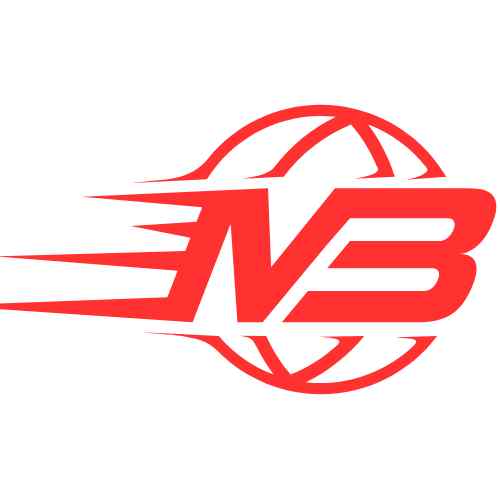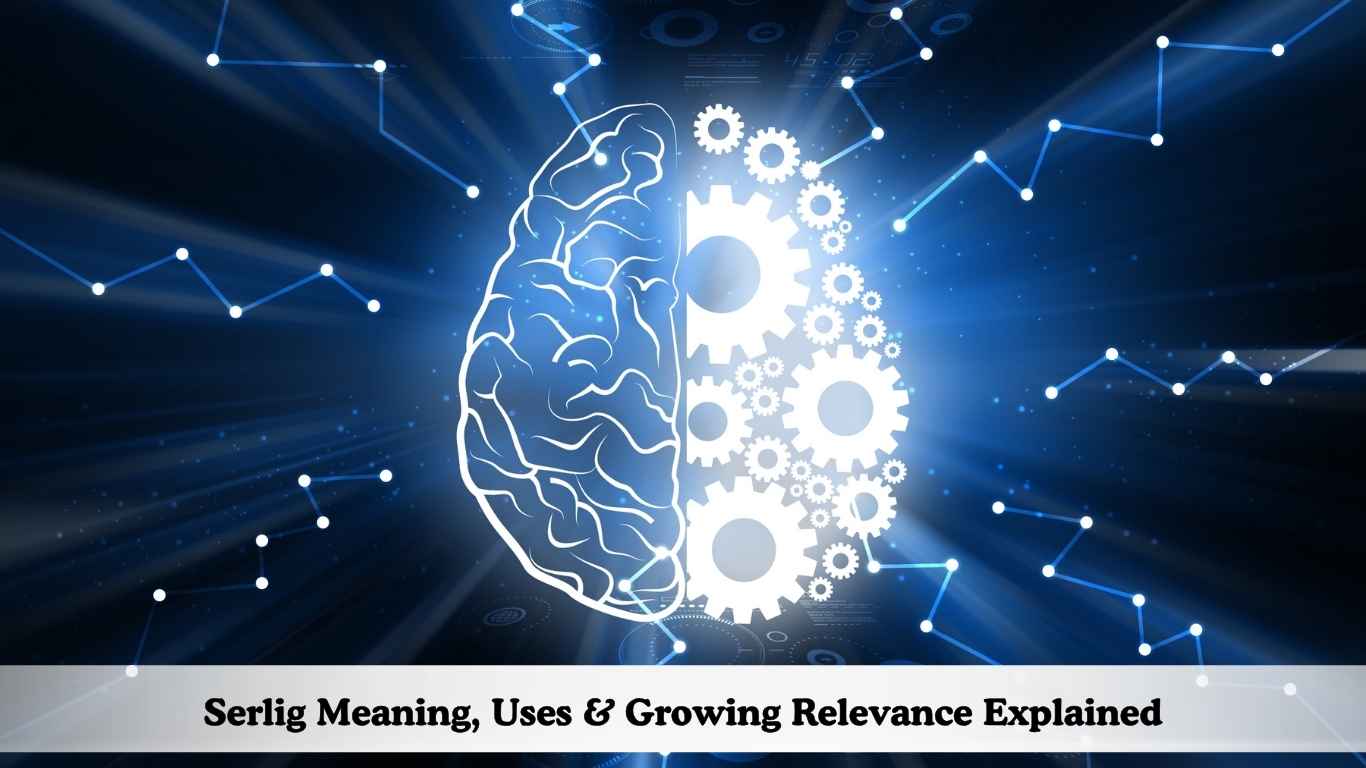In a world that thrives on innovation and connectivity, understanding emerging concepts is vital. One such term that has gained traction in recent years is “serlig.”
While it might not yet be a household name, its significance stretches across various sectors—from technology to social dynamics. As businesses adapt to changing landscapes, the relevance of serlig becomes increasingly apparent.
But what exactly does serlig mean? Why should we care about it now more than ever?
This blog post will delve into the intricacies of serlig, shedding light on its definition and background while exploring its impact on modern society.
Whether you’re a tech enthusiast or simply curious about new trends shaping our future, this exploration promises valuable insights into an evolving concept that’s making waves today.
Join us as we uncover the multifaceted world of serlig!
What Is Serlig? Definition and Background
Serlig is a term that has emerged in recent years, often associated with transformative ideas and practices.
While its origins are somewhat nebulous, it appears to be a blend of various concepts focused on connection and collaboration.
The word itself may derive from cultural or technological roots, reflecting the interconnectedness of modern society.
At its core, serlig conveys an essence of synergy—where different elements come together to create something greater than their individual parts.
This notion resonates deeply within industries striving for innovation and efficiency. As organizations increasingly prioritize teamwork over siloed efforts, serlig serves as a guiding principle.
The rise of the digital age has further amplified the importance of serlig. With technology reshaping communication channels, businesses must adapt quickly to stay competitive.
Serlig embodies this necessity by emphasizing cooperative strategies that leverage collective strengths.
In academic circles, researchers have begun exploring how serlig influences learning environments.
Collaborative learning approaches enhance student engagement while fostering critical thinking skills essential for future success.
Here again, we see how serlig plays a pivotal role in shaping educational methodologies.
Culturally, the concept invites diverse interpretations across different communities worldwide. For some cultures steeped in traditional values of unity and cooperation.
Embracing serlig aligns seamlessly with established philosophies about social harmony.
As we delve deeper into specific applications and industries influenced by serlig later in this blog post, it’s clear that understanding this concept is crucial today more than ever.
We are witnessing an era where boundaries blur between disciplines and sectors; hence grasping the nuances surrounding terms like “serlig” will empower individuals to navigate these complexities effectively.
The Importance of Serlig in Modern Contexts
Serlig has emerged as a significant concept in various modern contexts, influencing how we perceive and interact with technology and society. This relevance stems from its multifaceted nature, allowing it to adapt across diverse fields.
In the realm of communication, serlig fosters deeper connections between individuals and communities. It facilitates understanding by providing insights into cultural nuances that shape human interactions.
As globalization continues to shrink borders, serlig plays a crucial role in bridging gaps among different cultures.
The business sector also recognizes the importance of serlig. Companies are increasingly leveraging its principles to enhance collaboration within teams and create more inclusive work environments.
By promoting diversity through serlig, organizations can drive innovation while attracting top talent from varied backgrounds.
Education is another area where serlig shines brightly. Educational institutions utilize its frameworks to cultivate critical thinking skills among students.
By encouraging open dialogue about complex topics related to serlig, educators prepare learners for real-world challenges they might face after graduation.
In health care settings, embracing the concept of serlig opens doors for better patient-provider relationships.
Understanding patients’ unique perspectives leads to improved treatment outcomes and greater satisfaction levels among those seeking care.
Furthermore, in environmental discussions, the significance of serling cannot be overlooked. It encourages collaborative approaches toward sustainability initiatives that benefit communities while addressing global issues like climate change.
As societies navigate these rapidly evolving landscapes, marked by technological advancements and shifting cultural dynamics.
The importance of understanding serling becomes even more paramount today than ever before.
Common Uses of Serlig Across Industries
Sergic has found its place across various sectors, showcasing its versatility and importance. In healthcare, serlig plays a critical role in patient management systems.
It allows for efficient data collection and analysis, which can enhance treatment plans and improve patient outcomes.
The education sector also benefits from serlig technology. Learning management systems utilize it to personalize educational experiences. Educators can analyze student performance data to tailor their teaching methods more effectively.
In the finance industry, serlig is instrumental in risk assessment models. Financial institutions use it to predict market trends and make informed investment decisions.
This proactive approach helps mitigate risks associated with volatile markets.
Moreover, retail businesses leverage serlig for customer engagement strategies. By analyzing consumer behavior through serlig tools, retailers can optimize inventory management and marketing efforts.
This leads to increased sales and enhanced customer satisfaction.
The manufacturing sector incorporates serlig into supply chain optimization processes as well. By monitoring production lines in real-time, manufacturers can identify inefficiencies quickly and streamline operations accordingly.
Tech companies are not left out either; they employ serlig for software development cycles. Agile methodologies often integrate these concepts to facilitate better collaboration.
Among teams while improving product quality.
The entertainment industry uses elements of serlig in content creation analytics. Streaming services analyze viewer preferences using this method to recommend tailored content that keeps audiences engaged longer than ever before.
How Serlig Impacts Technology and Innovation
Serlig has emerged as a pivotal concept in the realm of technology and innovation. Understanding its implications can unlock new potential for businesses and individuals alike.
At its core, serlig embodies adaptability and responsiveness to changing environments. This flexibility is crucial in tech sectors that see rapid advancements. Companies that embrace serlig principles often stay ahead of competitors.
Moreover, serlig encourages collaboration across disciplines. When teams utilize this approach, they foster an environment where ideas can flow freely. This cross-pollination leads to breakthroughs that may not occur within siloed departments.
The application of serlig in data analytics cannot be overlooked. Organizations harness it to draw insights from vast datasets more effectively.
By applying serlig methodologies, firms can tailor their strategies based on real-time information rather than outdated trends.
In software development, integrating serlig means prioritizing user experience alongside functionality.
Developers who understand these dynamics create applications that are both innovative and intuitive for users, enhancing customer satisfaction significantly.
Furthermore, the impact of serlig extends into emerging technologies like artificial intelligence (AI). It provides frameworks through which AI systems can adapt better over time.
While learning from user interactions without compromising performance or security.
Embracing a culture centered around the tenets of serlig fosters resilience among tech companies facing market disruptions or unexpected challenges.
Firms that adopt such adaptive strategies are better equipped to pivot quickly when necessary—ensuring longevity in an ever-evolving landscape.
Benefits of Understanding Serlig Today
Understanding serlig offers a plethora of benefits, especially in today’s fast-paced world. It serves as a foundation for better decision-making across various domains.
When individuals grasp the intricacies of serlig, they can navigate complex situations more effectively.
In business scenarios, knowledge of serlig leads to improved strategies and operational efficiencies. Companies that incorporate its principles often find themselves ahead of competitors.
This understanding translates into enhanced productivity and innovation.
Furthermore, with the rise of technology, comprehending serlig becomes crucial. As industries evolve, staying informed about its implications enables professionals to leverage new tools and methodologies effectively. This adaptability is key in an ever-changing landscape.
Beyond professional advantages, personal growth is another significant benefit. Learning about serlig encourages critical thinking and problem-solving skills essential for daily life challenges.
Individuals equipped with this knowledge tend to approach situations with greater confidence.
Educational institutions are also recognizing the value of integrating serlig into curricula. Students who learn about it gain relevant insights that prepare them for future employment opportunities or entrepreneurial endeavors.
Networking opportunities expand when one understands serlig as well. Engaging in discussions around this topic can connect individuals from diverse fields who share similar interests or objectives.
Embracing the concept fosters a culture of continuous learning and curiosity. In an age where information is abundant yet fleeting, having a solid grasp on topics like serlig ensures relevance both personally and professionally over time.
Challenges Associated with Serlig
Serlig, while gaining traction in various fields, does not come without its challenges. Understanding these obstacles is essential for anyone looking to engage with this concept effectively.
One significant challenge is the ambiguity surrounding serlig’s definition. Different industries interpret the term in myriad ways. This lack of a universally accepted definition can lead to confusion and miscommunication among stakeholders.
Another issue pertains to compatibility with existing systems. Many organizations rely on established protocols that may not align well with serlig’s methodologies or frameworks. Transitioning to incorporate serlig often requires extensive training and adjustment periods, taxing resources and time.
Data privacy concerns also arise when implementing serlig-related technologies. As organizations embrace new systems based on this concept, they must ensure that safeguards are in place to protect sensitive information from breaches or misuse.
Resistance from traditionalists presents another hurdle. Some individuals or institutions may be reluctant to adopt new practices associated with serlig.
Due to fear of change or skepticism about its effectiveness compared to conventional methods.
Funding can also pose a challenge for projects involving serlig initiatives. Securing financial backing for innovative approaches can be difficult, especially if investors are unsure about potential returns linked directly to adopting serlig principles.
There is the risk of overhype surrounding the adoption of serlig concepts leading companies down an overly optimistic path without sufficient groundwork laid out first.
If expectations aren’t managed carefully, it could result in disappointment and reduced confidence in future applications related to this emerging trend.
The Future Outlook for Serlig and Its Relevance
As we look ahead, the relevance of serlig is poised to grow even further. The rapid pace of technological advancements ensures that this term will evolve alongside emerging trends.
Industries are increasingly integrating serlig concepts into their frameworks, creating a dynamic landscape where adaptability and innovation thrive.
The potential for serlig in sectors such as artificial intelligence, data analytics, and sustainable practices cannot be overstated.
Companies are beginning to recognize how deeply interconnected their operations are with the principles surrounding serlig.
This realization drives them toward strategic initiatives designed not only to enhance efficiency but also to foster sustainability.
Moreover, educational institutions are starting to incorporate discussions about serlig into their curricula.
As future generations enter the workforce armed with knowledge about its implications, they will contribute distinctly innovative ideas that could reshape existing paradigms.
Looking at consumer behavior too reveals an intriguing trend: customers seem more informed than ever before and demand transparency regarding products and services related to serlig principles.
Businesses aiming for long-term success must adapt by aligning themselves with these expectations.
Partnerships between corporations focusing on technology development and those involved in environmental stewardship may emerge as key players in promoting the significance of serlig across various platforms worldwide.
In essence, understanding what lies ahead for serlig requires a commitment from individuals and organizations alike.
A dedication not just to comprehending its meaning but actively engaging with its applications throughout society’s evolving narrative.




